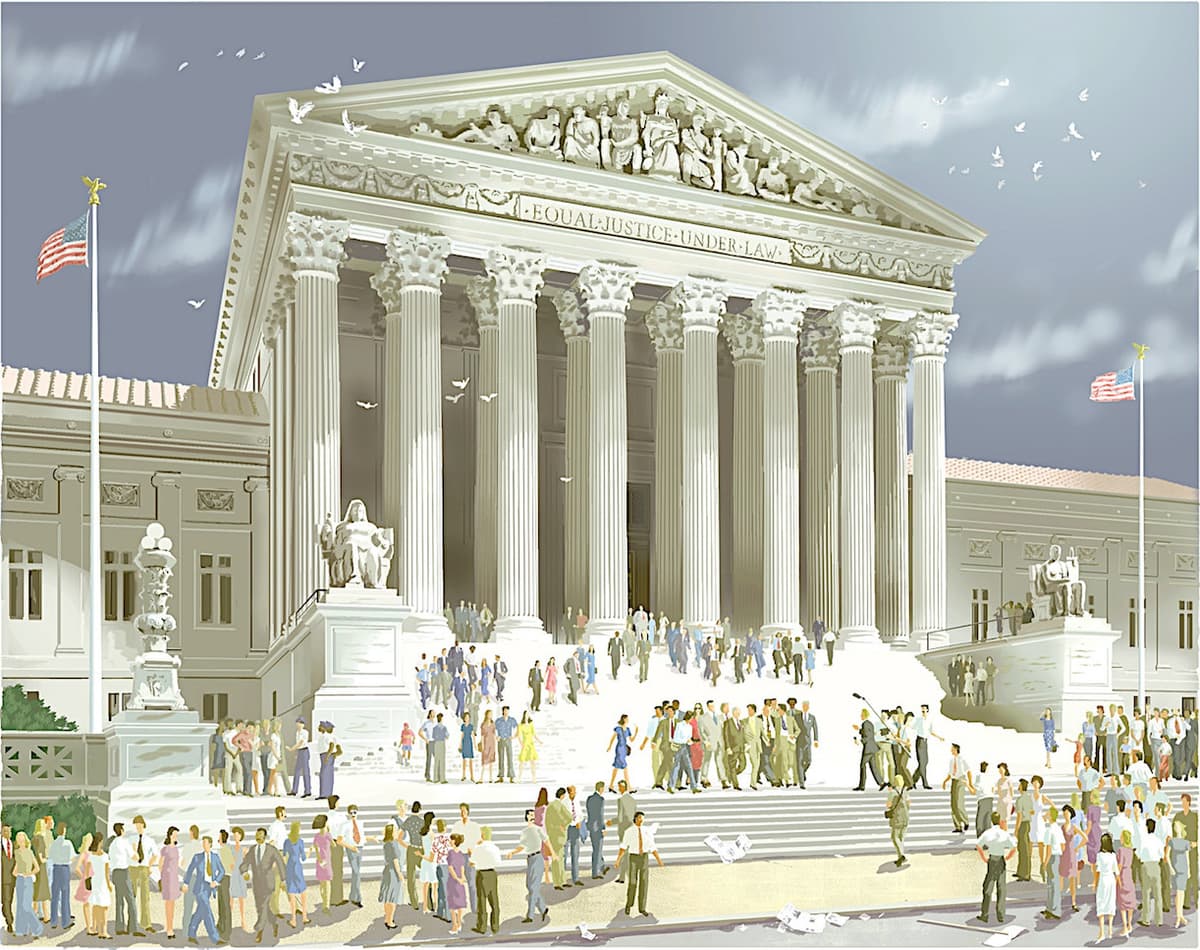The Secret History of Article III Leaks
For much of American history, it was not uncommon for word of what the Justices were doing to leak out, sometimes with the Justices doing the leaking.

Get set for a new controversy over the Supreme Court. For the New York Times is retailing a claim that, eight years ago, Justice Samuel Alito told some dinner guests at his home how the Nine were going to rule in the religious freedom case known as Burwell v. Hobby Lobby. The Times heard about it from a friend of the guests, the Reverend Robert Schenck, who wrote to Chief Justice Roberts about it four months ago. Justice Alito denies it.
It’s always amazing to us when our great newspapers get upset about leaks. This instance appears, at least to us, to be an effort by the Times to cast suspicion on Justice Alito over the leak of his draft opinion reversing Roe v. Wade. No mention of what to us is the most piquant part of this story — that for much of American history, it was not uncommon for word of what the Justices were doing to leak out, sometimes with the Justices doing the leaking.
This angle to the story is well told in “Secrecy and The Supreme Court: Judicial Indiscretion and Reconstruction Politics.” It’s an article in the William and Mary Law Review by a legal sage, Peter Fish. It was issued in 1967, but would make illuminating reading for the modern press and its critics. It certainly was for us. Mr. Fish reminds that mum has not always been the word when it comes to the high court.
Professor Fish finds that “premature disclosures were relatively common during the Nineteenth Century; neither prevailing custom nor ethical standards of the day militated against the practice.” When the nation was young, the justices were chatty and, for better or worse, to little effect. Mr. Fish finds it “impossible to conclude that either the affected parties or the Court suffered ill consequences.”
At least not “solely because of the leak.” As in, loose lips don’t sink slips (forgive us that reference to slip opinions). During Justice Joseph Story’s tenure, between 1812 and 1845, Mr. Fish notes that “members of the Court discussed rather freely the outcome of pending cases.” Even in such a controversial case as Dred Scott v. Sandford, where Justice John Catron told President Buchanan of the outcome before it was released.
That too had, Mr. Fish writes, “little or no effect on the Court as an institution or on the political fabric of the nation.” Mr. Fish reckons that “one might expect breaches” of such secrecy when “there exists a lack of cohesion among the nine Justices of the Court,” as was the case in the chaotic years around the Civil War. He tells the story of a court that was thinking out loud and kibitzing with the other two branches of government.
Mr. Fish focuses on the leak of the court’s epochal decision in 1866 in the Test Oath cases. After the Civil War, both Congress and the Show-Me state adopted laws that required members of select professions and officeholders to take an oath that they had never given aid to the rebel cause. A convicted Catholic priest and a former Confederate congressman appealed. A leak delivered the news that they’d won and that the oaths were no more.
The consequences of that leak, Mr. Fish explains, were “obscured” by the “effect of other forces operating in the political milieu” like “extreme partisanship and threats of physical coercion.” The same could be said of the milieu of the America that received news of the leaks in Dobbs v. Jackson Women’s Health and, maybe, Hobby Lobby. Could it be that America would be better served by a court that savors its more transparent past?
We don’t belittle the concerns of, say, Justice Felix Frankfurter, who warned that the Court, unlike Congress and the Executive, “should not be amenable to the forces of publicity.” Yet amid the Test Oath cases, Mr. Fish reports, a Missouri congressman decried that the court’s “ermine is trailed in the dust. Ichabod is written on its face, and nobody in all America will ever pay any respect to it again.” Yet despite the leak, the court went on to glory.

